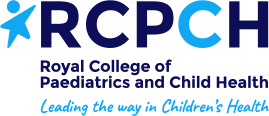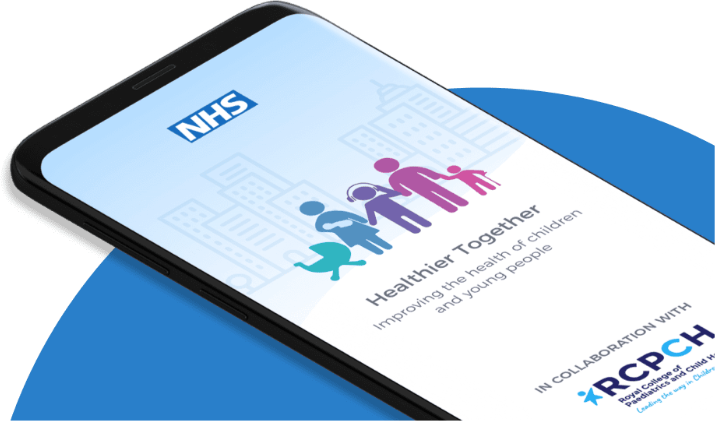My baby has a rash
Rashes are common in newborns and babies. Most rashes are harmless and go away on their own. You may notice that your baby’s skin is dry or peeling in the first 1-2 weeks of life and this is normal.
A common rash seen in babies in the first 3-4 days of life is erythema toxicum. Babies with this type of rash are well in themselves. They have a red blotchy rash that can come and go and often appears on the face, body, upper arms and thighs. This rash does not require any treatment and will go away on its own.
Information and pictures of other common skin rashes in babies can be found here.
In the first 3 months of life, if your baby has a rash and other symptoms, they may need to be reviewed by a healthcare professional. Please see below for things to look out for.
Click below to watch a video from Best Beginnings on common skin rashes:
When should you worry?
If your child has any of the following:
-
Has a rash that does not disappear with pressure (the ‘Glass Test’)
-
Develops swollen lips, a swollen tongue and is struggling to breathe
-
Breathing very fast, too breathless to talk, eat or drink
-
Working hard to breathe, drawing in of the muscles below the ribs, or noisy breathing (grunting)
-
Breathing that stops or pauses
-
Is pale, blue, mottled or feels unusually cold to touch
-
Difficult to wake up or very sleepy
-
Weak, high-pitched cry or can’t be settled
-
Has a fit (seizure)
-
Has a temperature more than 38°C or under 36°C (unless fever in the 48 hours following vaccinations and no other red or amber features
You need urgent help
Go to the nearest Hospital Emergency (A&E) Department or phone 999
If your child has any of the following:
-
Has a rash that looks like small blisters or fluid filled spots
-
Skin that is swollen, red or hot.
-
Redness around the base of the umbilicus (belly button)
-
Nappy rash that isn’t getting better with regular nappy changes or barrier creams
-
Breathing a bit faster than normal or working a bit harder to breathe
-
Dry skin, lips or tongue
-
Not had a wee or wet nappy in last 8 hours
-
Poor feeding (less than half of their usual amount)
-
Irritable (Unable to settle them with cuddles, toys or feeding)
-
Getting worse and I am still worried
You need to contact a doctor or nurse today
Please call your GP surgery or contact NHS 111 - call 111.
If symptoms persist for 4 hours or more and you have not been able to speak to either a member of staff from your GP practice or to NHS 111 staff, recheck that your child has not developed any red features.
None of the above features are present
-
It is common for newborns to develop blotchy red skin at 2 to 3 days old. This is a normal newborn rash and shouldn’t bother your baby. It clears after a few days
-
Addition information is available about infant crying and how to cope – click here
Self care
Continue providing your child’s care at home. If you are still concerned about your baby, speak to your health visitor or local pharmacist
Where should you seek help?
- If it is non-urgent, speak to your local pharmacist or health visitor
- If your child has any of the above features, urgently see your GP. For an urgent out-of-hours GP appointment, call NHS 111
- You should only call 999 or go to your nearest Emergency Department (A&E) in critical or life threatening situations
For wear and tear, minor trips and everything in between
Self-care
You can treat your child's very minor illnesses and injuries at home.
Some illnesses can be treated in your own home with support and advice from the services listed when required, using the recommended medicines and getting plenty of rest.
Sound advice
Children can recover from illness quickly but also can become more poorly quickly; it is important to seek further advice if a child's condition gets worse.
For information on common childhood illnesses go to What is wrong with my child?
Pharmacists are experts in many aspects of healthcare and can offer advice on a wide range of long-term conditions and common illnesses such as coughs, colds and stomach upsets. You don’t need an appointment and many have private consultation areas, so they are a good first port of call. Your pharmacist will say if you need further medical attention.
Sound advice
- Visit a pharmacy if your child is ill, but does not need to see a GP
- Remember that if your child's condition gets worse, you should seek further medical advice immediately
- Help your child to understand - watch this video with them about going to the pharmacy
For information on common childhood illnesses go to What is wrong with my child?
The 0-19 Service for children and young people is delivered by Oxford Health NHS Foundation Trust and offers a single point of access for Health Visiting, School Nursing and the Family Nurse Partnership. You can contact the teams using the details below:
Single Point of Access (SPA): 01865 903 800
Email: cyp0-19@oxfordhealth.nhs.uk
Chat Health Parentline
Text us any time for confidential advice and support and you will have a response the next working day (Monday-Friday exluding Bank Holidays).
Parents and carers for children aged 0-4: Text 07312 263 081
Parents and carers of children aged 5-11: Text 07312 263 227
Young people aged 11-19 and their parents and carers: Text 07312 263 08
Health Visitors
Health visitors are registered nurses or midwives who have additional training in community public health nursing. They provide a universal service, targeted to individual needs for children aged 0-5 years. Learn more about the Oxfordshire Health Visiting Service here!
School and college Health Nurses
School Health Nurses are specialist public health nurses and have offices across Oxfordshire. They work very closely with Health Visitors to support school aged children. They are available for young people to access in secondary schools and colleges, and offer a service to children who are home educated. They work closely with children, young people and their families to support and promote health and wellbeing. Learn more about the Oxfordshire School and college Health Nursing Service here!
Family Nurse Partnership
The Family Nurse Partnership service supports parents who are aged 19 years or under at conception, or under 21 years if they have been in care. The Family Nurse works alongside younger parents in their home, offering health, wellbeing and development support and information from the early stages of pregnancy, usually up until your child is two. Learn more about the Family Nurse Partnership service here!
Midwives provide advice, care and support for women and their babies during pregnancy, labour and the early postnatal period. They provide health education and parenting advice until care is transferred to a health visitor. This usually happens when your baby is about 2 weeks old.
Sound Advice
A midwife is an expert in normal pregnancy and birth.
You can find out more information about your local midwifery team by clicking here.
GPs assess, treat and manage a whole range of health problems. They also provide health education, give vaccinations and carry out simple surgical procedures. Your GP will arrange a referral to a hospital specialist should you need it.
Sound advice
You have a choice of service:
- Doctors or GPs can treat many illnesses that do not warrant a visit to A&E
- Help your child to understand – watch this video with them about visiting the GP or going to a walk in centre
For information on common childhood illnesses go to What is wrong with my child?
If you’re not sure which NHS service you need, you can call 111 or use 111 online.
Please note that 111 online is for people aged 5 and over. Call 111 if you need help for a child under 5.
An adviser will ask you questions to assess your symptoms and then give you the advice you need, or direct you straightaway to the best service for you in your area.
Sound advice
Use NHS 111 if you are unsure what to do next, have any questions about a condition or treatment or require information about local health services
For information on common childhood illnesses go to What is wrong with my child?
Emergency Departments (A&E) provide vital care for life-threatening emergencies, such as loss of consciousness, suspected heart attacks, breathing difficulties, or severe bleeding that cannot be stopped. If you’re not sure it’s an emergency, call 111 for advice.





